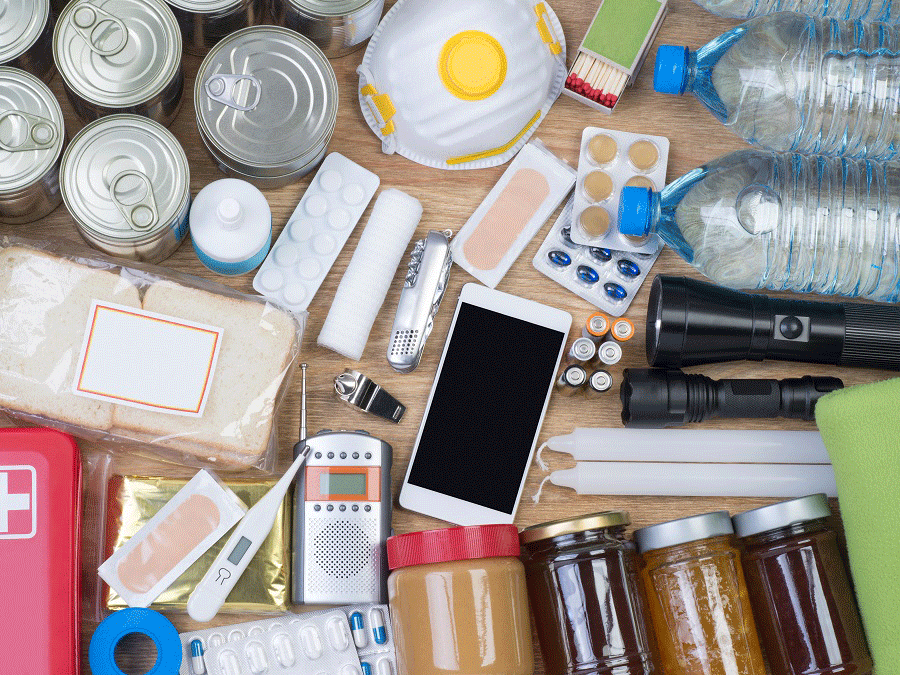
PLANNING FOR BEFORE, DURING, AND AFTER A STORM
Extended Stay Hotels Can Help with Natural Disaster Recovery
Erratic and increasingly-severe weather conditions put millions of Americans—living in tornado zones, along coastal regions, etc.—increasingly at risk of experiencing a natural disaster such as a hurricane, tropical storm, tornado, wind storm, severe snow event or blizzard, or flooding at some point in their lifetime.
These natural phenomena can knock out power, destroy infrastructures, and damage or raze homes and entire neighborhoods. While we can’t control natural disasters, we can be aware of them, prepare for them, and make a plan for how to handle the events as they approach including general preparation, actions just before an event, staying safe and secure during a weather incident, and working through the immediate and, for some, long term impacts of destruction from a natural disaster.
PHASE 1 - GENERAL PREPAREDNESS
The most important step to surviving natural disasters is to be ready for them. Storm seasons, geography, and other predictors tell us what may come our way. General readiness is based on a handful of universal steps:
- Understand options/coverages and properly insure homes and important items against flood and special conditions.
- Store IDs, cash, back-up credit cards, and important documents in a fire/weather-proof box in a hidden, easy-to-access place
- Keep tree limbs trimmed and safely away from your home and windows, roofs, and entrances properly maintained/sealed
- Make quick departure plans that include evacutation routes that include transportation and destinations options
- List essential items, pet arrangements, and options for temporary housing including extended stay hotels

PHASE 2 - PUTTING YOUR PLAN INTO ACTION
Being generally preapred helps people stay calm as storms approach but gathering final, crucial items and strategizing for an incident is stressful. To minimize lost time and risk do the following in the days ahead of an expected event:
- Gather fresh flashlights, extra batters, and a manual/battery-powered weather radio so you won't rely on power, wi-fi, etc.
- Withdraw some cash. ATMs, debit/credit card readers, and online banking/spending may be temporarily interrupted.
- Pack waterproof bags for family members with 3-5 days of appropriate clothes, toiletries, medicines, and necessities.
- Box up a can opener, non-perishable foods, durable silverware, and a few gallons of fresh water for eating and drinking.
- Assemble a travel pack with a first-aid kit, rubber gloves, toilet paper, and additional items that can help in an emergency.
- Consider a gas-powered generator, water reserves, and additional reserves should storms knock-out power and plumbing.
- Secure outdoor belongings and cover all windows with duct tape and cardboard to avoid shattered glass and debris.

PHASE 3 - WEATHERING THE STORM
Once a storm hits there is little to do other than take cover, monitor weather and instructions, remain calm and comfort others. The good news? Storms, typically, are shorter than the prep and recovery times. Use the time to:
- Take cover in the safest part of your home - often the center of basement or ground floor - away from windows, doors.
- Leave at least one window slightly open to avoid additional risks including air pressure building inside the home.
- Temporarily turn off/disconnecting gas lines, pilot lights, and other potential challenges to safety and survival.
- Use electricity for light, listening to weather reports, announcements, and evacuation orders, etc. - save batteries.
- Lower fridge/freezer settings and keep doors closed. Items will freeze and stay colder/edible longer if power is lost.
- Be ready to turn to battery-operated lights and radio and to engage generators should electricity fail.

PHASE 4 - IMMEDIATELY AFTER THE STORM
Authorities will notify those impacted when weather events are officially over and when it is safe to leave shelter areas and/or return to homes to begin assessment and recovery. Once you are authorized to evaluate your home/options:
- Consult with authorities, insurance agents, and others to ensure permission to enter and assess your home condition.
- Wear strong-soled, waterproof boots, long sleeves and pants, and heavy-duty work gloves when evaluating/cleaning.
- Start evaluation along home's perimiter then inspect basement, ground floor, and upstairs - as safe and appropriate.
- Look for damage including cracks, leaks, breaks, and down items and less-obvious threats - broken wires and pipes.
- Immediately leave your home and property if you discover any damage or impact that might make the structure unsafe.
- Photograph/document all damange or concerns and provide information to insurers, utility companies, and authorities.
- Coordinate insurance evaluations/assessments/claims/support, etc. and restoration of utilities, etc. as appropriate.

PHASE 5 - SHELTER DURING RECOVERY
While most survivors of a devistating event will return home, many will need a place to stay for a night, week, month, or longer during recovery and rebuilding of homes, neighborhoods, and cities. Our extended stay hotels offer:
- In-room kitchens with full-sized refrigerator, microwave, and cooktop make cooking and dining more affordable.
- Choice of three suite layouts allow for one-to-four guests with combinations of beds, couches, and sleeper sofas.
- 24/7 access to guest laundry rooms, vending machines, and staff support ensures comfort and safety.
- Free wi-fi allows guests to reconnect and communicate with family, friends, and support while away.
- We have 100% smoke-free and pet-friendly hotels to help everyone freel at home.
- Weekly rates and monthly rates available and most locations participate in FEMA Voucher programs.

